Tripping on the Void: An Interview with Plaid Klaus of Image’s Void Trip
This May, Image Comics will be collecting the five issues of Void Trip, by Ryan O’Sullivan and Plaid Klaus. I took advantage of the chance to interview Plaid. Here’s the description for Void Trip:
Meet Ana and Gabe — the last two humans left alive in the galaxy. They’re low on fuel, they’re low on food, and they’re low on psychedelic space froot, but they’re still determined to make it to the promised land: hippy-paradise super-planet Euphoria. VOID TRIP is the story of their journey, the friends and enemies they made along the way, and how the universe responded to those who dared to live freely within it. “VOID TRIP aims to answer the question: ‘how can we be free in a universe that will always course-correct to limit us?’” said O’Sullivan. “This isn’t your typical adventure comic, with violence as the solution to every conflict. It’s a road trip story. Its main concern is exploring the human condition. It’s Jack Kerouac and Hunter S. Thompson meets Herman Melville and Cormac McCarthy. Expect laughter, tears, and existential dread in equal measure.”
[Click the images for Void-sized versions.]
Hi Plaid! Thanks for the chance to talk Void Trip. I really enjoyed it. The writing was smart, original and fast-paced, and the art was evocative and beautiful. Stoned hippies in space at the edge of human extinction was the read I hadn’t known I was looking for.
Plaid: Thank you child of the Froot.
Narratively, Void Trip is clear, and yet there are lots of places where the themes feel very open-ended. The story is complex and subtle enough that the reader has to interpret what they see, both philosophically and morally, while laughing. It’s a tricky thing to leave the theme to the reader while making sure the story is clear. How did you approach that artistically?
A large part of my job is world building. We started this series off as a simple story about “Space Hobos” wanting to live free, but as we continued to develop it, we realized it was an existential journey. My work on the covers was an attempt to instill some spiritual wonder and desire for exploration in the reader. Issue #1: I wanted to develop imagery that evoked the sun being a token of the soul of man, represented as a white circle.
Issue #2: The Great White, as the Demiurge like character, became the antithetical symbol for the Void that looms over our spiritual aspirations. This void was represented by a black circle.
Issue #3: Ana is relentless, and despite her dreams becoming a nightmare she chooses to press onward (ingesting the sun as if it were acid).
Issue #4: Here Ana is in front of a star about to go super nova, combined with the repeating ‘hanged man’ imagery (a call back to Gabe in issue 03), the star still shines in her heart.
Issue #5: Ultimately, the last humans have to hand off their spiritual essence to their progeny, Artificial Intelligence. Here the white circle is handed off to AI in the classic Sistine Chapel, ‘The Creation of Man,’ imagery. The direction of the handoff is also inverted, because this is mankind escaping the Demiurge and ascending to Godhood through AI.
By encoding those messages on the cover, the reader can’t help but try to dig deeper for meaning inside the book. Also, I started developing additional symbol structures within the world that represent the aspirations of the characters as well as iconographic meaning to scenes.
Here’s an example. The Great White is represented by the VOID, which is the antithesis to NIRVANA (the ever present moment of infinity). However, they are two sides to a coin, so they both share the symbol of the circle both on the cover and inside the book.
The White circle of the star and the black circle of the void. On the interior pages, we first meet our heroes under a blazing sun and at the end of the first scene they ride off in the direction of the sun (the reader has no way of knowing this is a foreshadowing of events to come).
In issue 02 Great White makes his arrival in a pool of blood to show the stakes of his pursuit. He has a circular gaping wound in his chest that frames the canvas, this reinforces the image of the circle and alludes slightly to the world being contained inside his body.
The star is used strongly again when it envelops their space van before a crucial turning point involving Gabe, and then again with both Ana and Great White’s final appearance.
There are several other symbol structures running concurrently throughout the book. Each one evolves alongside the story. As you said, the story itself was solid, so other than just world building (which was a task within itself) I wanted to inject symbol structures to encourage the reader to seek for meaning. Ultimately it helps to reinforce the search for meaning that looms over the story. Is life a Trip or is it Void of meaning?

Void Trip isn’t just a philosophical story. It’s really funny, in a laugh-out-loud and a dark way, a bit like Tarantino’s humor in Pulp Fiction. Being funny is hard to do, with every chance of overdoing or underdoing it. Were there written or visual bits of humor you wanted to do but that you pulled back from?
The only one I can think of was Ryan wanted a planet of nymphs that greeted Ana and Gabe into their society with open arms. Everything was fine until they discovered the nymphs used human skin for their archives.
It felt like a decent gag, a bit of a play on Twilight Zone where the aliens books says, “To Serve Man” and it’s actually taking about how to cook and serve man. Anyway, I don’t know if we backed off on the gag for that reason, I think I just didn’t want to draw nymphs.
Luckily, Ryan was cool with switching it up and that gag became the now classic scene of the ‘loose definition’ of cannibal.; Where Ana directed Gabe to the planet assumed safe because its inhabitants are cannibals, only to find out they eat humans.
Ana was referring to the aliens as ‘cannibals’ because they eat people. In the end, my refusal to draw nymphs led to Ryan making an even more unique joke and also more apt to the character’s personalities.
I’m not sure if Ana learned something at the end of the story. I doubt I could summarize how she changed. Do you think Ana learned and grew, or is she more of a trickster figure whose archetypal role isn’t necessarily to grow, but to create chaos through which others grow?
Ana driving off into the sun represented her ‘becoming a sun,’ or achieving enlightenment. She died on her own terms, not in fear of death and her physical body was shed as she literally became consumed and absorbed into light.
There is definitely something beautifully poetic about her final surrender to something bigger than herself physically and her trust that her spirit will become free in doing so.
I think it’s an ascension metaphor, personally. Originally Ryan said he wanted a Thelma and Louise ending where she drives off a cliff or something to that affect. I threw in the idea of her driving into the sun so we could leave the physicality of her death an open ended question mark.
Since the sun is such a looming symbol throughout the series, the reader is left to wonder what did really happen, is she just gone, or is she off in another plane of existence on her next trip?
In an interview, you called “Anna is an allegory for youth, and she’s on a TRIP. She is young enough in the world that she still sees it as a magical playground. She represents the glass being half full, running away from the hard truths in life. Her refusal to accept the hardships of reality keeps her in the Froot realm, but we experience her starting to burn out as the series progresses.” I think Ana is powerfully present in all the experiences in the story and the art reflects the mental state of Hitch when he first tried Froot. What sort of artistic choices did you consciously pursue to tell a story where altered states of mind play such a big role?
So, in drug culture, I feel like there are very distinct cycles which parallel those of the acceptance of death. The euphoric elevation takes you above your suffering for a temporary moment in time but it will drop you back on your ass.
I think there is a slight departure that happens with an addict versus someone who is an occasional drug user, and it usually has to do with escaping versus enjoying a moment in time. Younger drug users tend to be more like Ana as an open eyed ’star-child,’ due to the mind still being impressionable enough to believe in limitless possibilities.
When you encounter aged hippies, with greater experiences, you see a more resigned spiritual connection which usually incorporates the acceptance of that Kali energy. There is an understanding that all things pass, everything is consumed, will eventually die and new elements are reborn as another form. There isn’t this attachment to an infinite ’this can last forever’ belief of youth. It’s those stages of death that repeat in the series.
This is primarily reinforced starting in issue 04 as Ana enters the final stages of grief. After Gabe’s dramatic departure, we see Ana riding off into the sunset on a space-bike in DENIAL; next she displays ANGER as she gazes off into a sunrise that no longer makes her happy (the dark night of the soul). Then she tries BARGAINING with Hitch to acquire his ship thinking she can escape the impending doom of the Great White. Next is DEPRESSION when she breaks down hugging the AI alone in the garage and finally ACCEPTANCE when she sets her final course in Hitch’s ship in issue 05.
So, as an artistic choice, to reinforce this change in Ana, I needed to show a mirror of her former self. When Hitch enters in his ‘star-child’ hippie for, fully engulfed in his spiritual guru looking essence, the reader has a contrasting image to realize Ana has moved passed that stage in her mind.
She has progressed from the ‘Fool’ and recognizes that archetype in Hitch (and takes full advantage of it). Also, as a subtle hint to those who study symbols, I slipped in a gnostic cross on her jacket which is alludes to her final realization of being nailed to the cross (the old, right hand is the past, left is the future, you’re stuck hanging in the present).
These are her final moments in the garden (so to speak) before she ascends. I don’t expect a lot of readers to get these visual cues, and I didn’t feel the need to throw them in peoples faces, but the fact that they’re there makes people curious to their meaning.
Thank you Plaid! I loved Void Trip and I loved the chance to talk with you about it.
Anytime, anywhere, thank you brotha.
Void Trip will be out as a trade paperback in May. It’s not at all your normal comic story. I really enjoyed it and suggest checking it out!
Derek Künsken writes science fiction and fantasy in Gatineau, Québec, but he’s in Beijing this weekend, teaching a course to Chinese writers on how to write SF. While he’s in China, the Chinese translation of The Quantum Magician, his first novel, will be launching and then he’ll be a special author guest at the first Asia-Pacific Science Fiction Conference! He tweets from @derekkunsken.
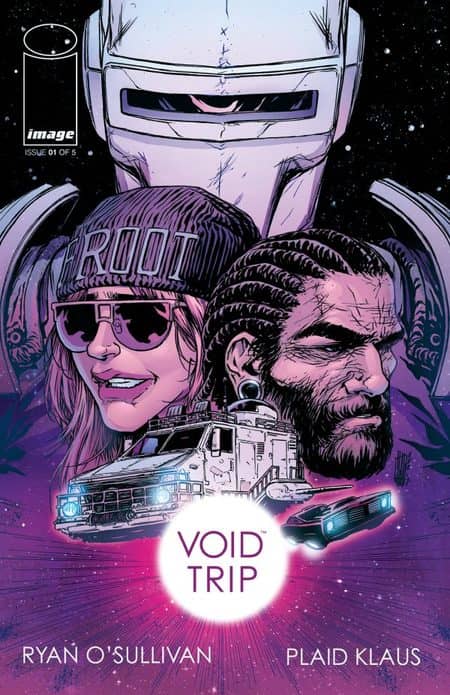
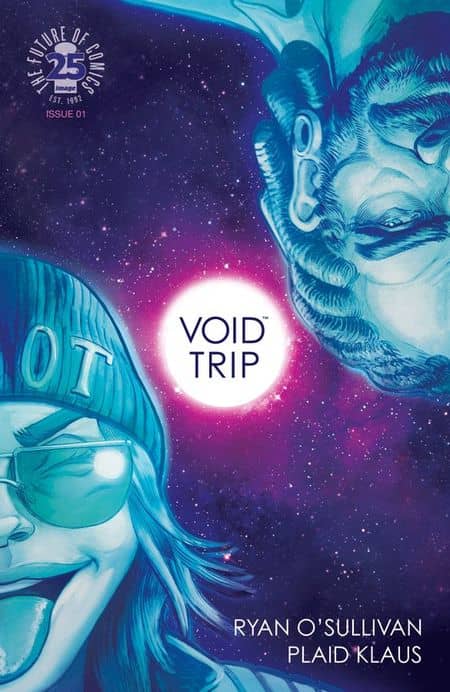
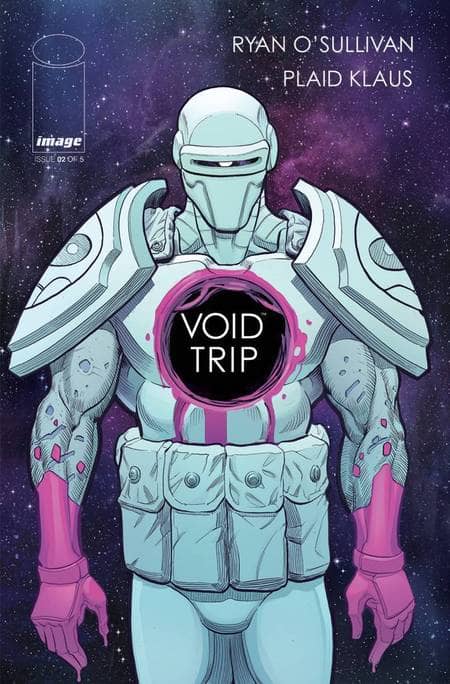
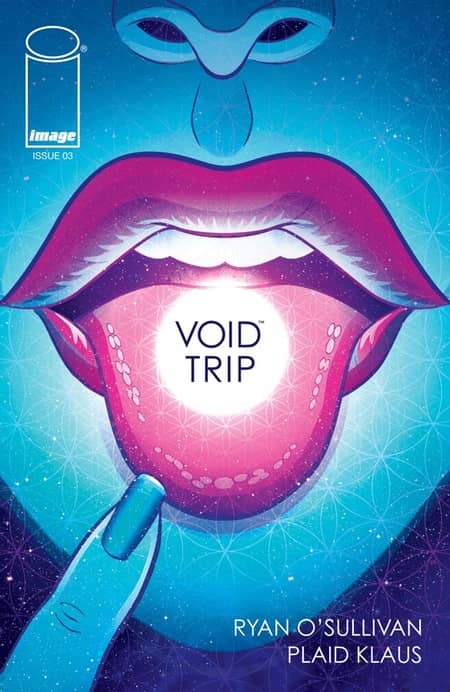
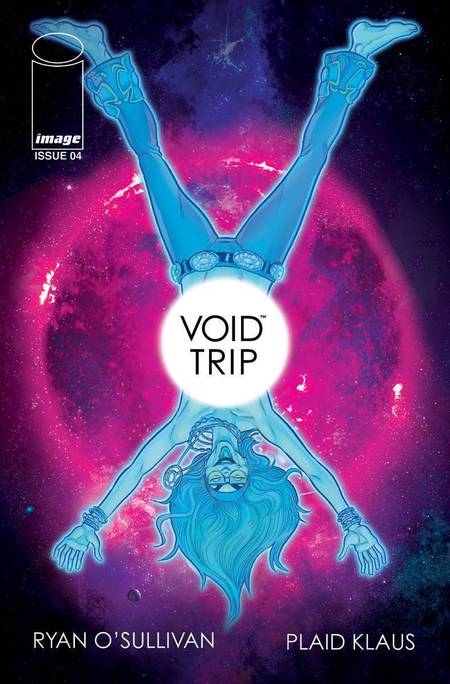
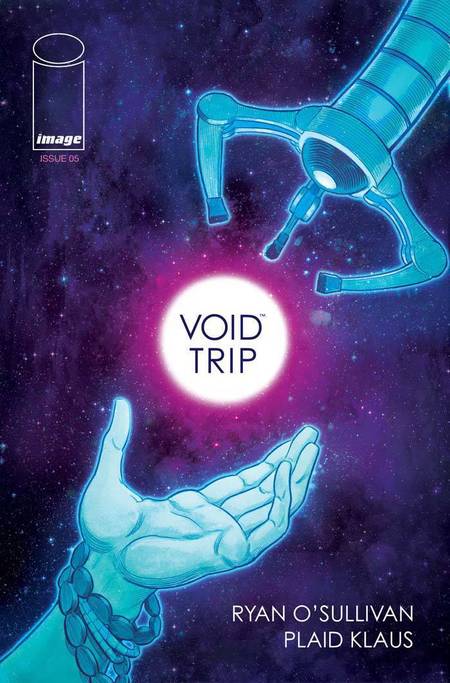
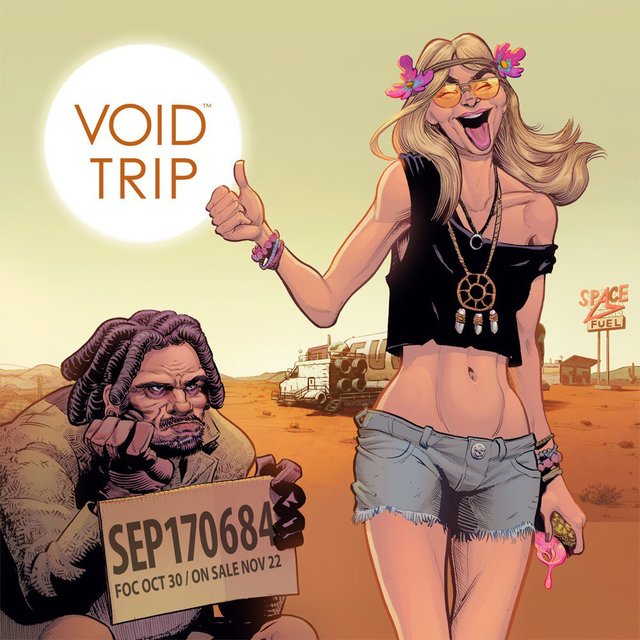
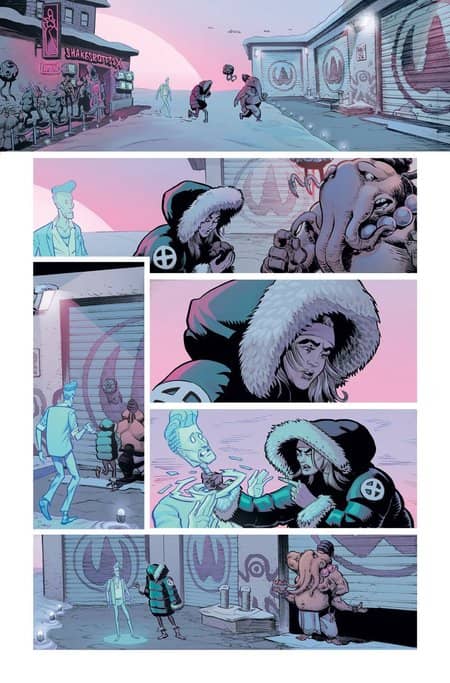
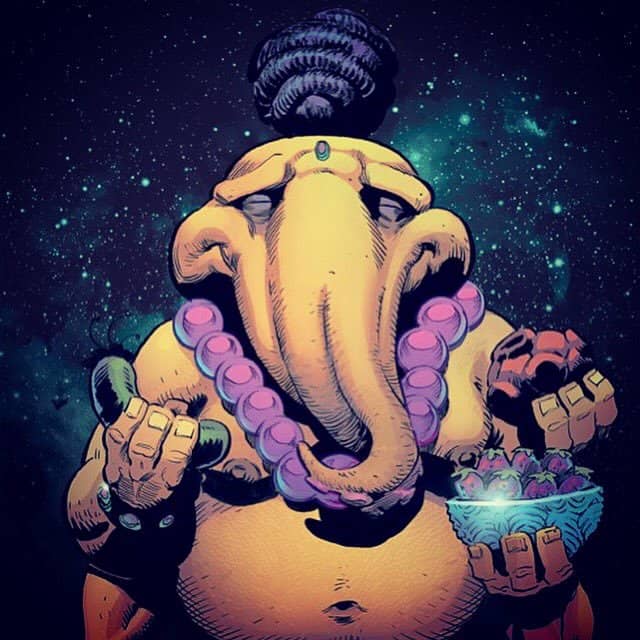
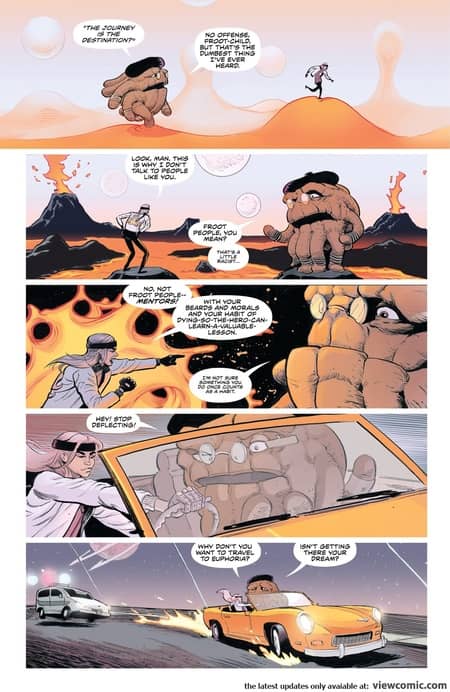
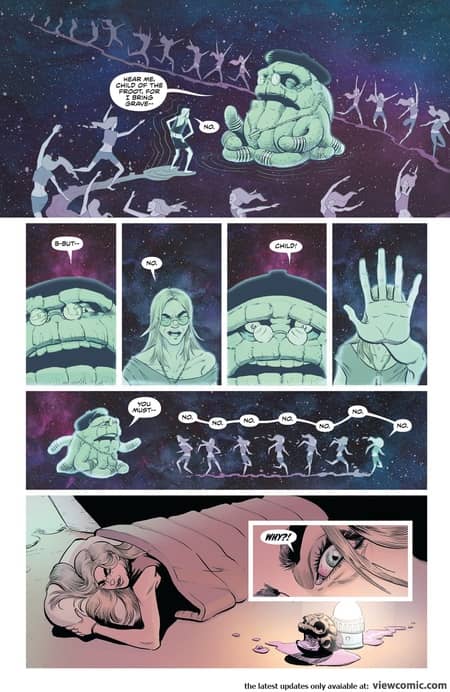
I appreciate this VOID TRIP review!!!
I’m the artist and co-creator of VOID TRIP from Image comics. I wanted to reach out to see if you’d be interested in doing a review of my latest graphic novel, HIVE MIND (set to release in March).
Here is the HIVE MIND PRESS-KIT:
https://mindcomics.com/hive-minid-presskit
Here is the HIVE MIND KICKSTARTER EARLY SIGN-UP:
https://www.kickstarter.com/projects/mindcomics/hive-mind-0
Let me know if you’re interested and I can send you a free copy of the book.
Cheers!
Plaid Klaus
Mind Comics Inc. | CEO
mindcomics.com